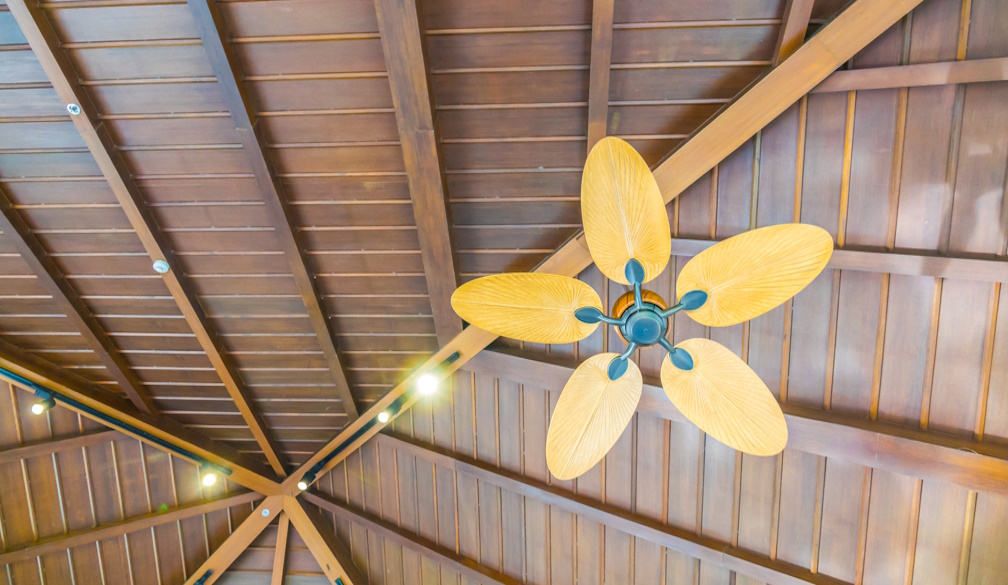Choosing the Right Ceiling Fans for Your Home or Business: A Practical Guide

Whether you're outfitting a new home or upgrading an office or commercial space, selecting the right ceiling fans can make a noticeable difference in comfort, energy efficiency, and overall ambience. While they may seem like a basic fixture, today's ceiling fans come with a range of design, functionality, and technology options that cater to diverse needs and preferences.
Understanding the Core Function of Ceiling Fans
At their core, ceiling fans are designed to circulate air and create airflow that helps regulate temperature. While they don't lower the temperature like an air conditioner, the breeze created by the spinning blades helps evaporate sweat and make the room feel cooler. In cooler months, many fans now feature a reverse function that pushes warm air down from the ceiling, making them useful all year round.
This dual-purpose operation makes ceiling fans not just a seasonal fixture but an essential part of any room's long-term climate management strategy.
How to Choose the Right Size Ceiling Fan
One of the most overlooked but crucial factors when selecting ceiling fans is size. A fan that’s too small for a large room will be ineffective, while a fan that’s too big for a small space can overwhelm the room and consume unnecessary energy.
For rooms up to 75 square feet, a 29 to 36-inch fan typically works well. Medium rooms around 100 to 150 square feet are best served by a 42 to 52-inch fan. Larger rooms or open plan areas may need fans 56 inches or more in diameter or even multiple fans to ensure even air distribution.
Ceiling Height and Mounting Options
Ceiling height plays a significant role in how well ceiling fans perform. Fans work best when the blades are 7 to 9 feet above the floor. For standard ceiling heights, a typical downrod mount will suffice. In homes with low ceilings, flush-mount or hugger fans are recommended to maintain clearance. For high ceilings or vaulted spaces, extended downrods may be needed to bring the fan to an effective height for airflow.
Correct placement ensures better performance, safety, and efficiency, particularly in busy or high-traffic areas.
Material and Blade Considerations for Different Spaces
Not all ceiling fans are created equal in terms of materials. Indoor models often use lightweight blades made of timber, plastic, or MDF, suited for controlled environments. However, if you're installing a fan in a high-humidity room like a bathroom or an outdoor area such as a patio, you'll need moisture-resistant or all-weather blades made from ABS plastic or treated metal.
The number of blades also influences performance. While traditional ceiling fans often come with four or five blades, newer designs may have three for a minimalist look and greater energy efficiency. More blades can offer quieter performance, but airflow often depends more on the motor and pitch of the blades than quantity.
Ceiling Fans and Interior Design Harmony
Modern ceiling fans are as much about appearance as they are about function. With finishes ranging from matte black and brushed nickel to white, woodgrain, and antique brass, there's a model to suit every décor.
For contemporary or industrial homes, fans with sleek metal finishes and minimalist designs fit naturally. Rustic or farmhouse interiors can benefit from wooden or timber-look fans that complement exposed beams and warm lighting. Coastal styles often lean toward white or light-coloured finishes that blend into beachside homes or light-filled rooms.
Whether you want your ceiling fans to stand out as a design feature or blend seamlessly with the ceiling, there’s no shortage of style options.
Energy Efficiency and Smart Features
One of the main reasons ceiling fans remain so popular is their low energy consumption. They use significantly less electricity than air conditioners and can reduce your need for cooling when used together. This makes them an environmentally friendly and cost-effective option, especially in places with warm climates or rising electricity costs.
Many new models also offer smart features like remote controls, timer functions, Wi-Fi compatibility, and voice assistant integration. These options make it easier than ever to manage comfort and efficiency, allowing you to control ceiling fans with your phone or smart home system.
DC motor fans are becoming increasingly common as they provide quieter operation, consume less power, and have longer lifespans compared to traditional AC motor fans.
Maintenance Tips to Keep Ceiling Fans Performing Well
Keeping ceiling fans in good condition is simple with regular maintenance. Dust can accumulate on blades, which not only affects performance but can also recirculate allergens. Wiping blades clean every couple of weeks and checking for loose screws or imbalances helps avoid wobbling and noise issues.
Fan motors are generally maintenance-free, but if your unit starts to make more noise than usual, it may need professional servicing or replacement. Keeping the blades balanced and regularly tightening any mounting hardware ensures quieter, longer-lasting operation.
Why Ceiling Fans Still Make Sense Today
Despite the rise of sophisticated HVAC systems, ceiling fans offer advantages that modern air conditioning can’t replace. They're cost-effective, easy to install, require minimal maintenance, and serve both aesthetic and practical purposes. In areas with fluctuating temperatures or where ventilation is limited, fans offer a consistent and adaptable solution.
For those concerned about rising energy costs or seeking eco-conscious ways to manage indoor comfort, ceiling fans are an ideal choice. Their ability to work alongside other systems, reduce energy consumption, and contribute to healthier airflow makes them an important feature in today’s energy-efficient homes and businesses.
Conclusion
As one of the simplest yet most effective home comfort solutions, ceiling fans have proven their worth across generations. Their adaptability to different climates, spaces, and designs means they’re more relevant now than ever. Whether you're building a new home, retrofitting a workspace, or refreshing an older room, ceiling fans remain a smart and stylish investment.


















